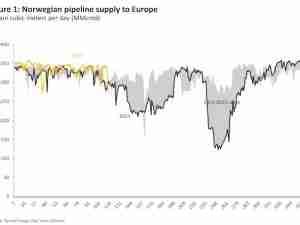Oil held near a three-month high in New York as OPEC’s production cuts allayed concerns of a renewed surplus, while prospects for a resolution to the U.S.-China trade war supported the outlook for demand.
Futures rose 0.7 percent from their close on Friday, when they capped a 5.4 percent weekly advance. Trade talks between the world’s two top economies are “picking up” as a March 1 tariff deadline nears, according to Steve Censky, the U.S. Department of Agriculture’s deputy secretary. Saudi exports fell by over 1.3 million barrels a day in the first half of February compared with the same period last month, said tanker intelligence firm Kpler.
Oil has rallied around 23 percent this year as the Organization of Petroleum Exporting Countries and its allies curtail output, while American sanctions on Venezuela and Iran are threatening to curb more supplies. Still, signs of slowing global economic growth and record U.S. crude production continue to weigh on investor sentiment, making the outcome of the trade negotiations pivotal for energy demand.
“The market focus remains on the supply cuts from OPEC,” said Michael Poulsen, an analyst at Global Risk Management Ltd.
West Texas Intermediate for March delivery, which expires Wednesday, rose 37 cents from Friday to $55.96 a barrel on the New York Mercantile Exchange at 10:41 a.m. in London. Monday’s transactions will be booked Tuesday for settlement because of the U.S. President’s Day holiday. The more-active April contract gained 36 cents to $56.34.
Brent for April settlement fell 30 cents to $66.20 a barrel on the London-based ICE Futures Europe exchange after rising more than 8 percent in the five sessions through Monday. The global benchmark was at a $9.84 premium over WTI for the same month.
‘Very Productive’
While high-level meetings in Beijing last week made little obvious progress, U.S. President Donald Trump called them “very productive” and has said he’s willing to delay additional tariff increases as long as there’s movement toward a “real deal.” Chinese trade negotiators headed back to Washington for more talks starting Tuesday.
Kpler estimated Saudi oil exports fell to 6.2 million barrels a day in the first half of this month, lower than the level of 6.9 million barrels indicated by Energy Minister Khalid Al-Falih for March. It’s less likely the kingdom will be able to revive shipments, given production at its largest offshore field Safaniyah is curtailed, Kpler said.










